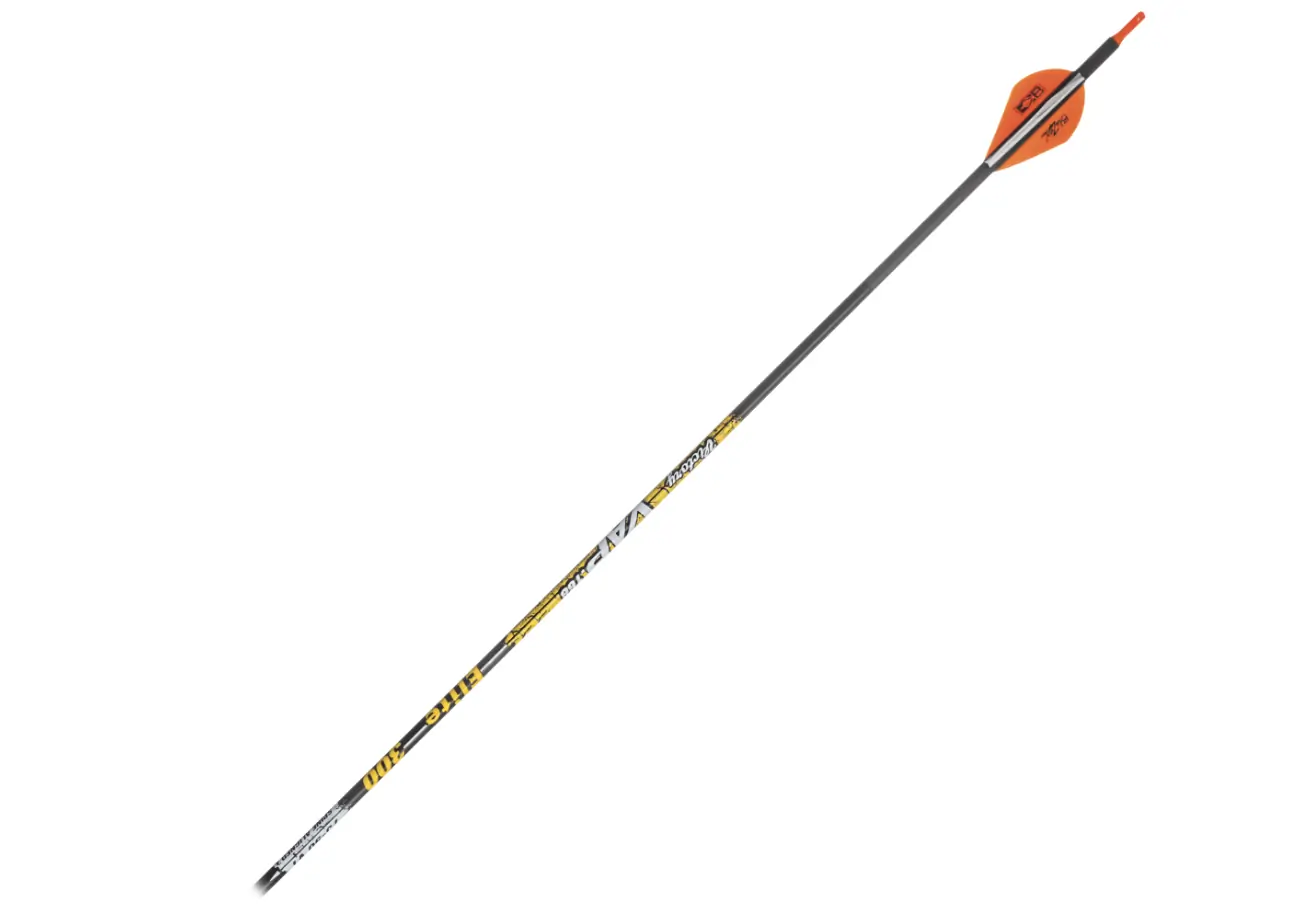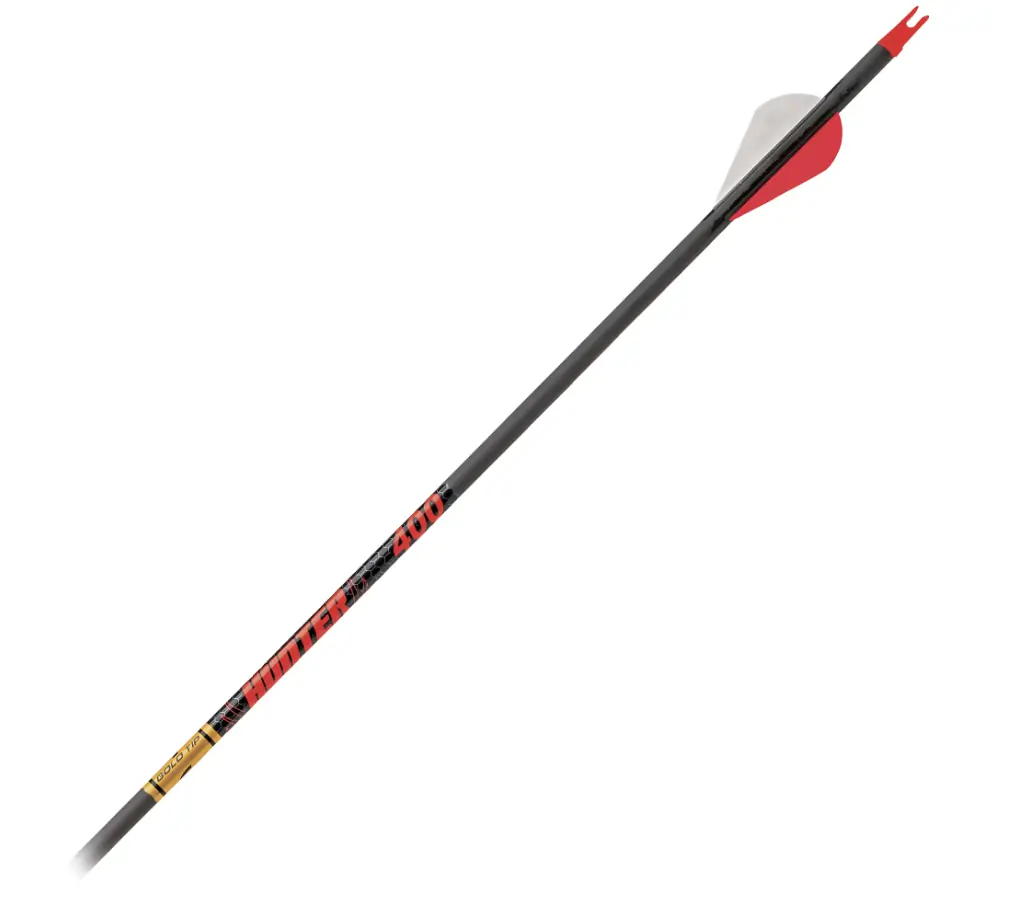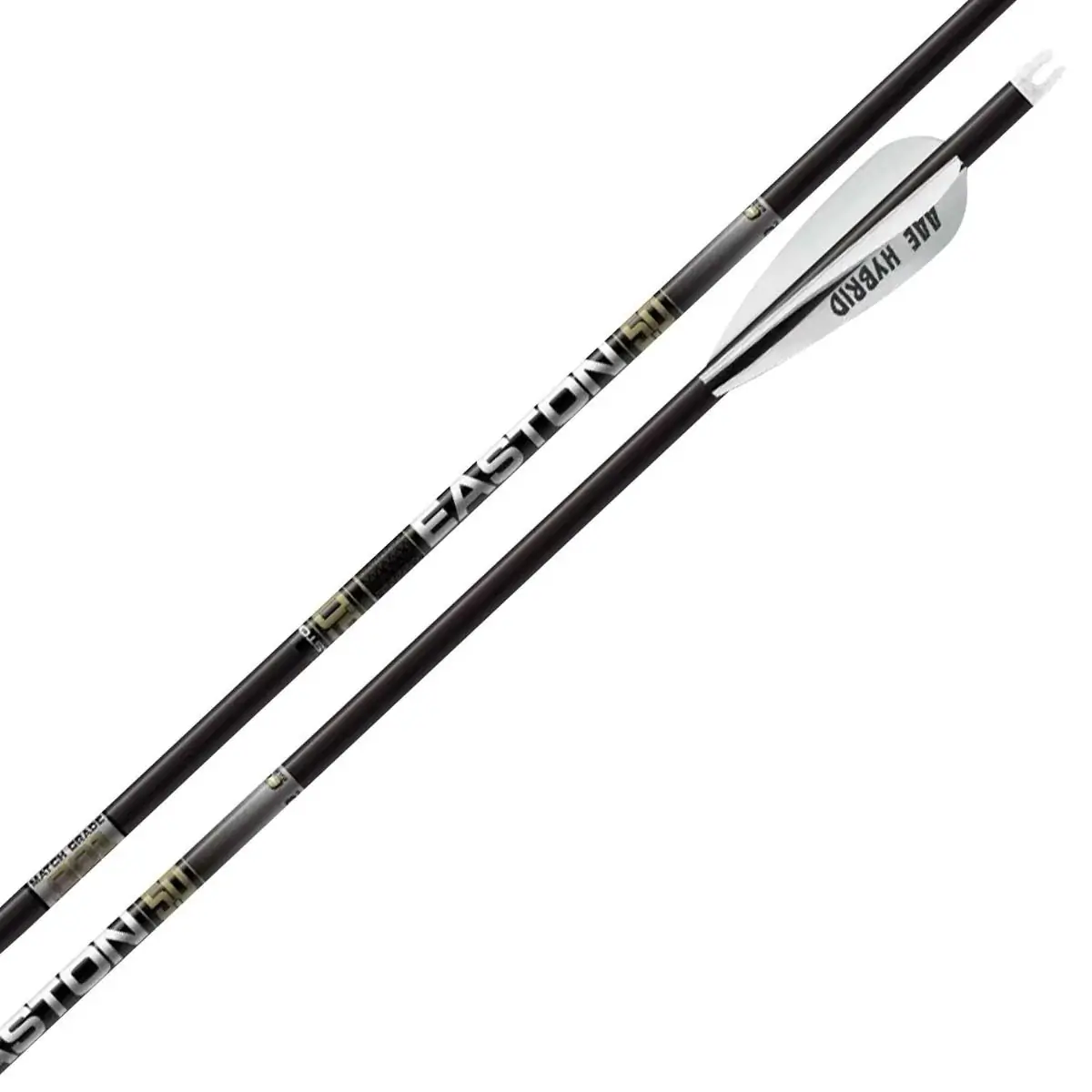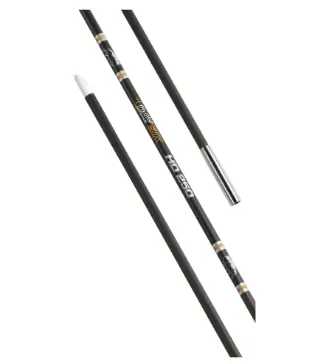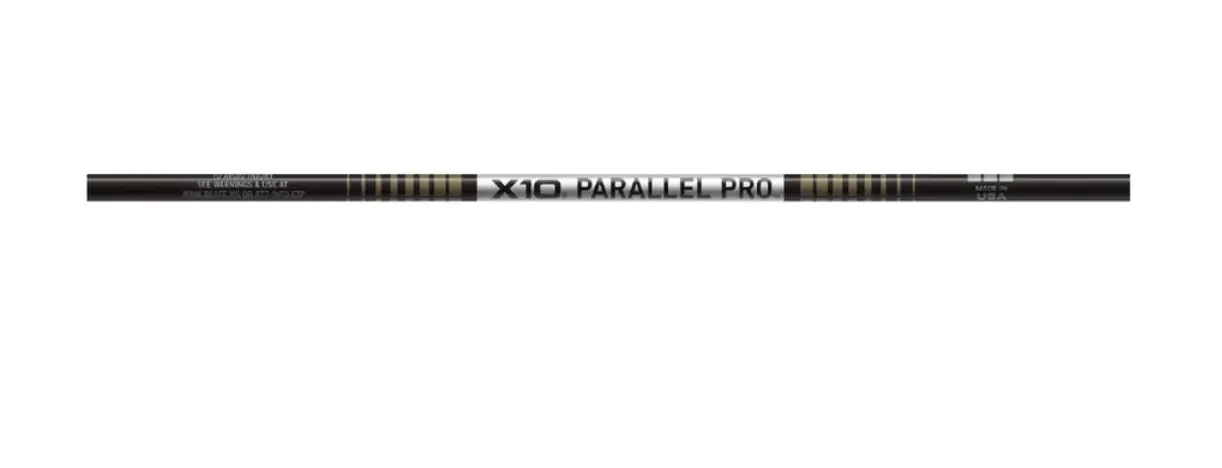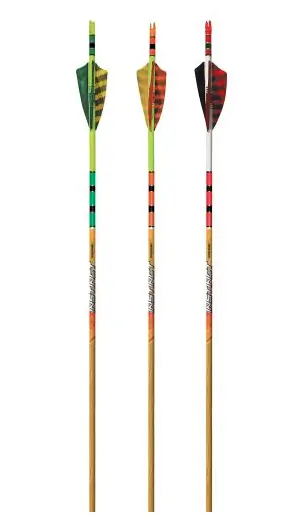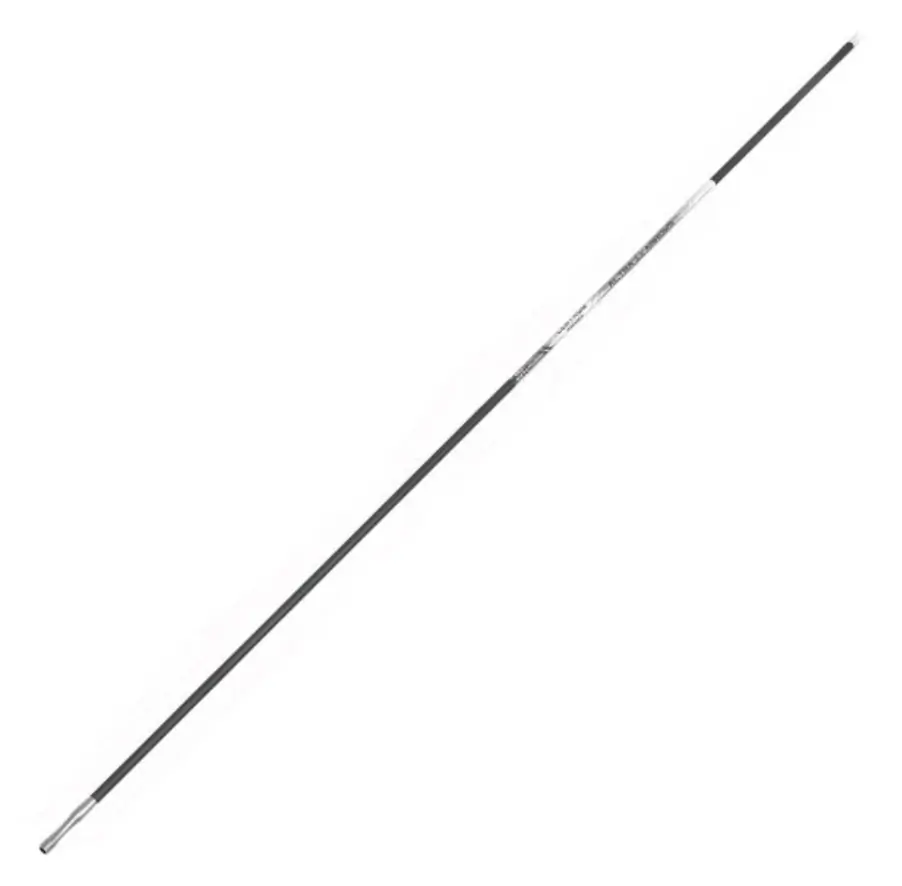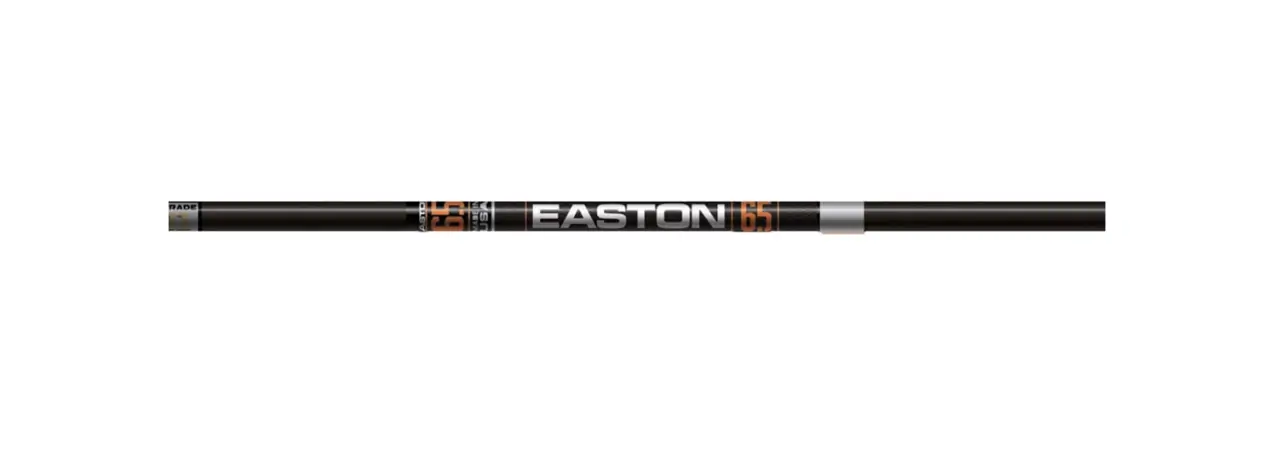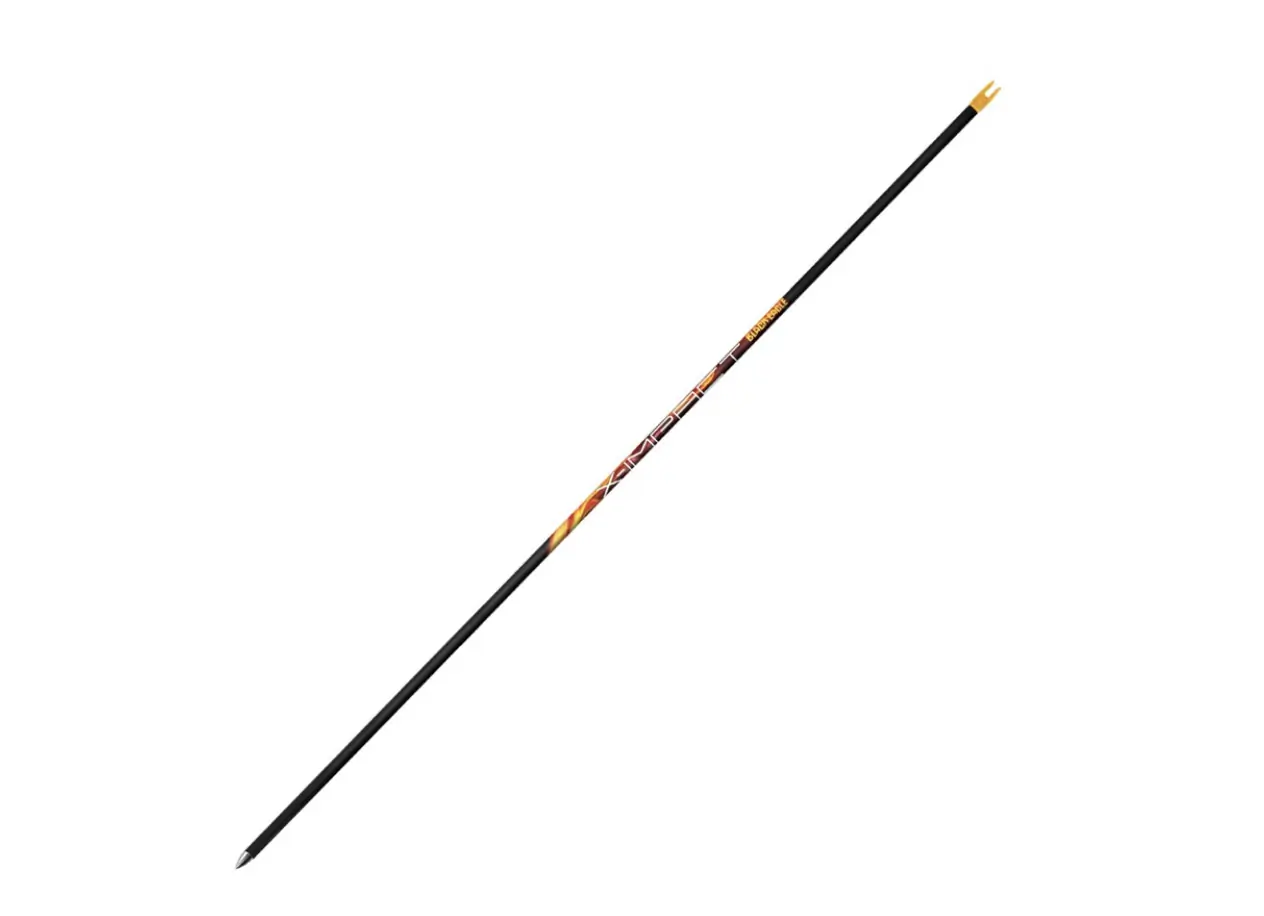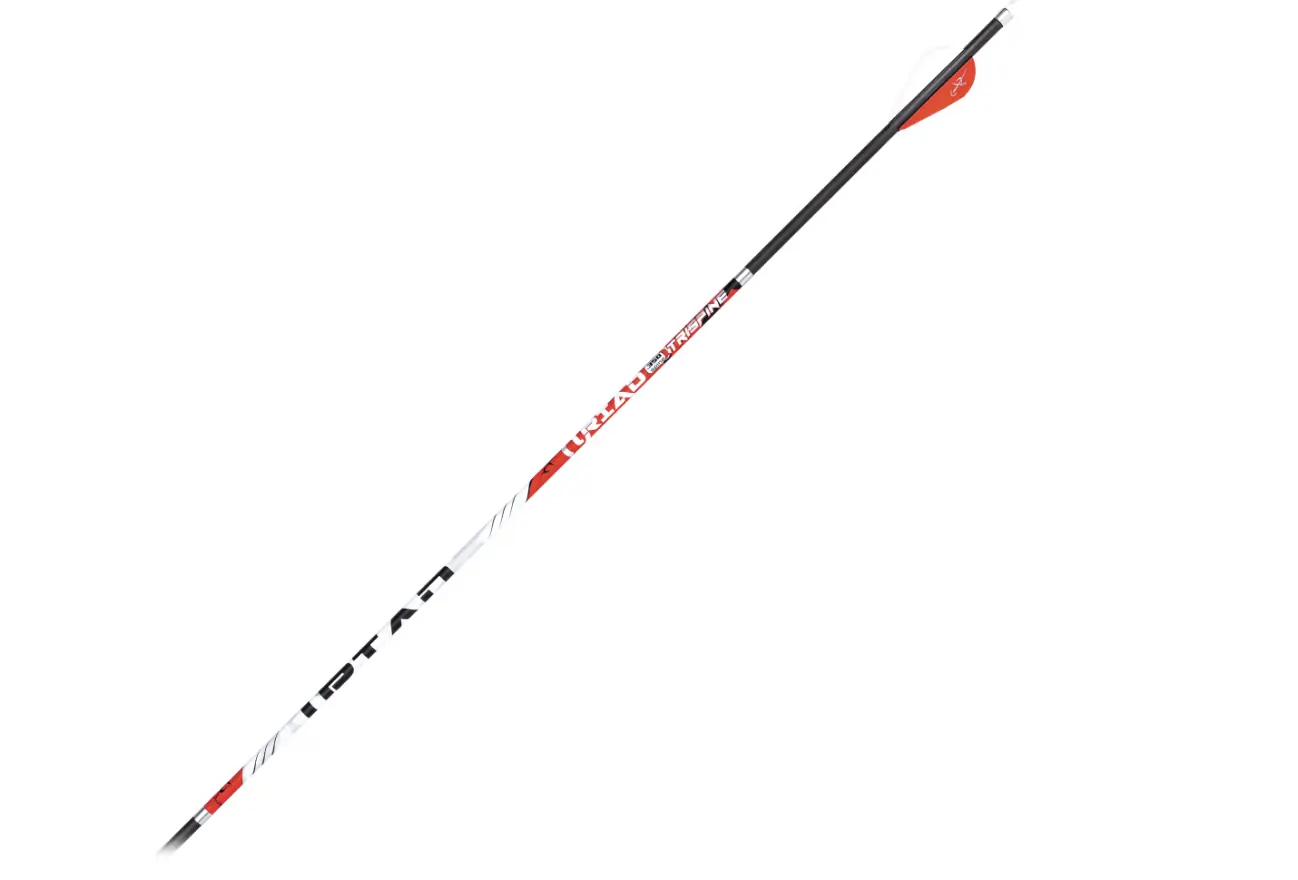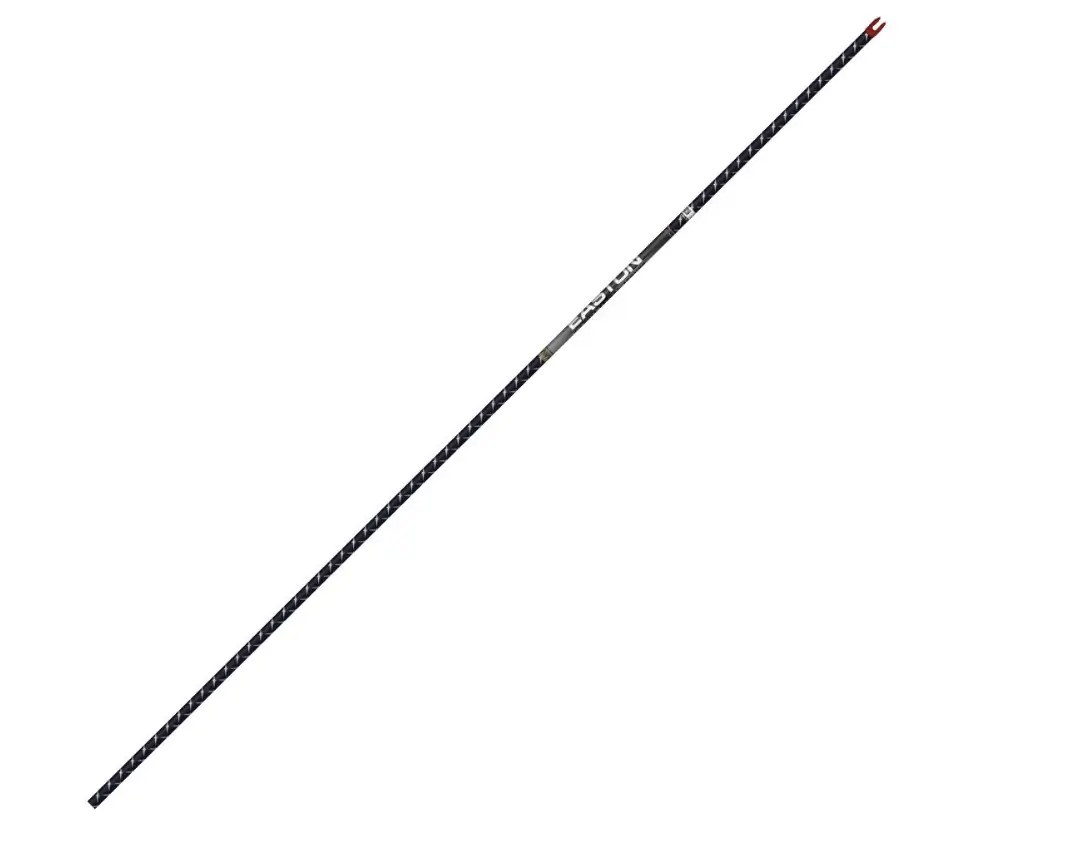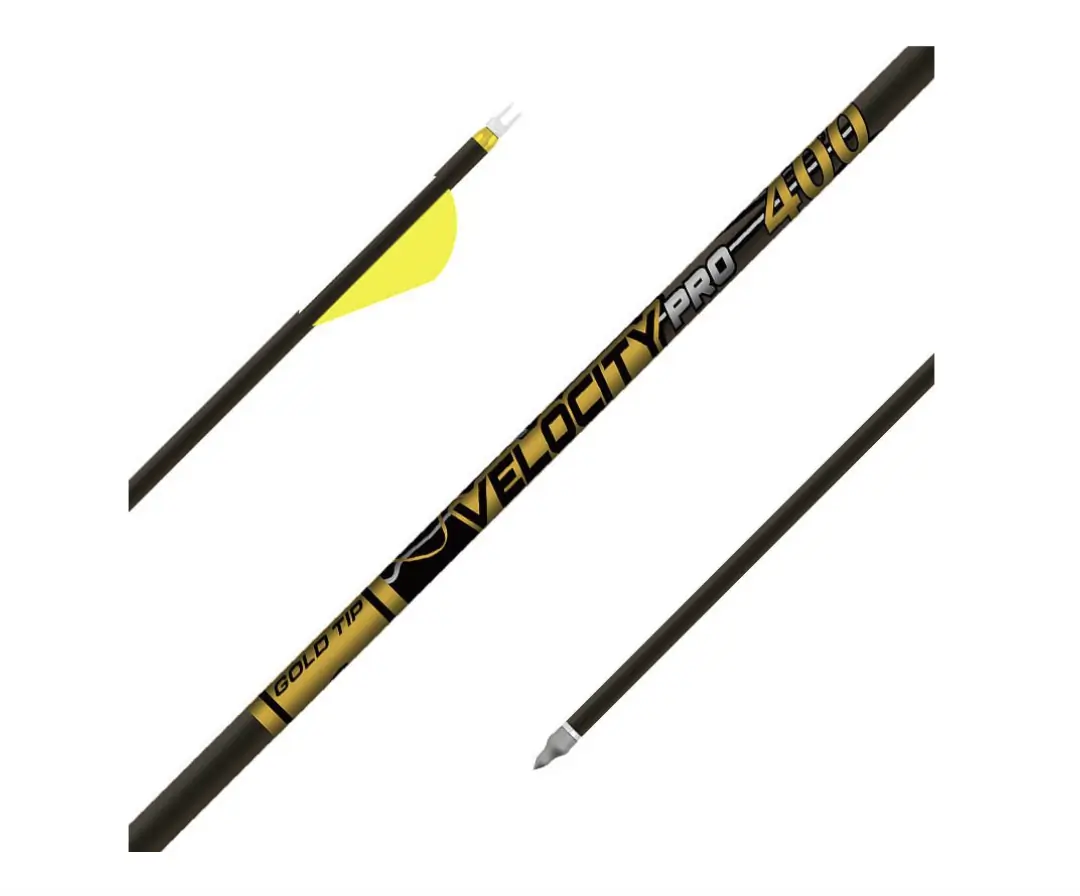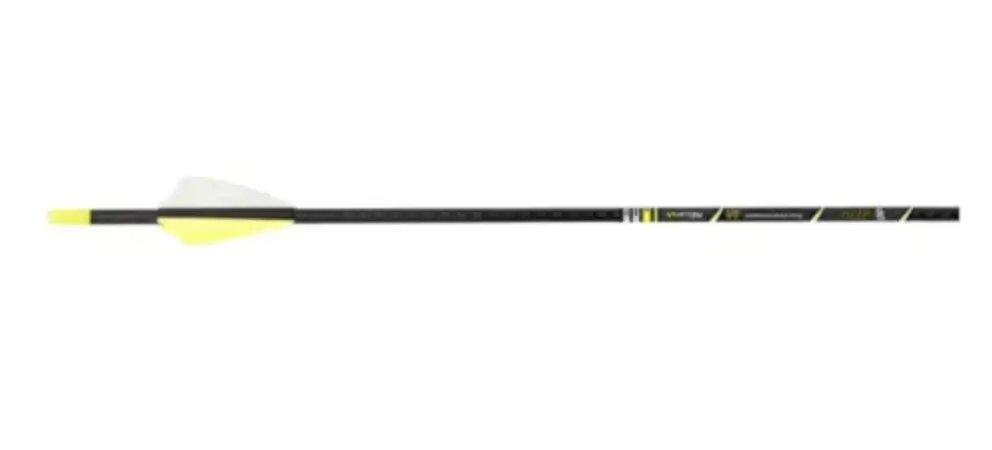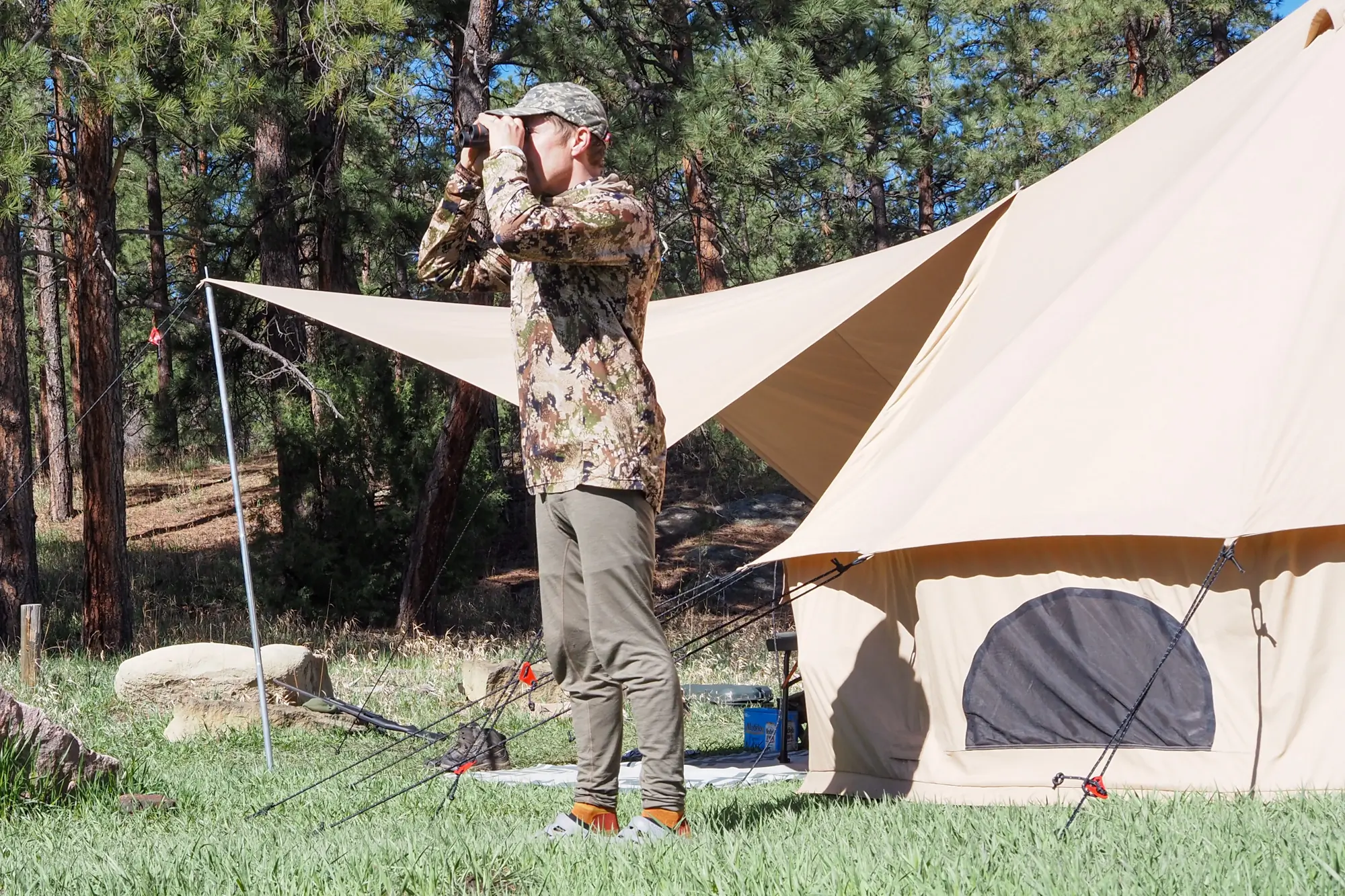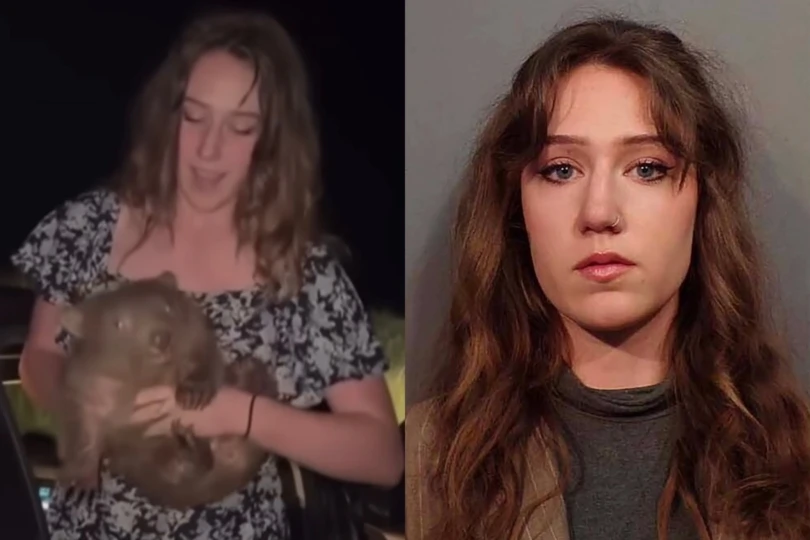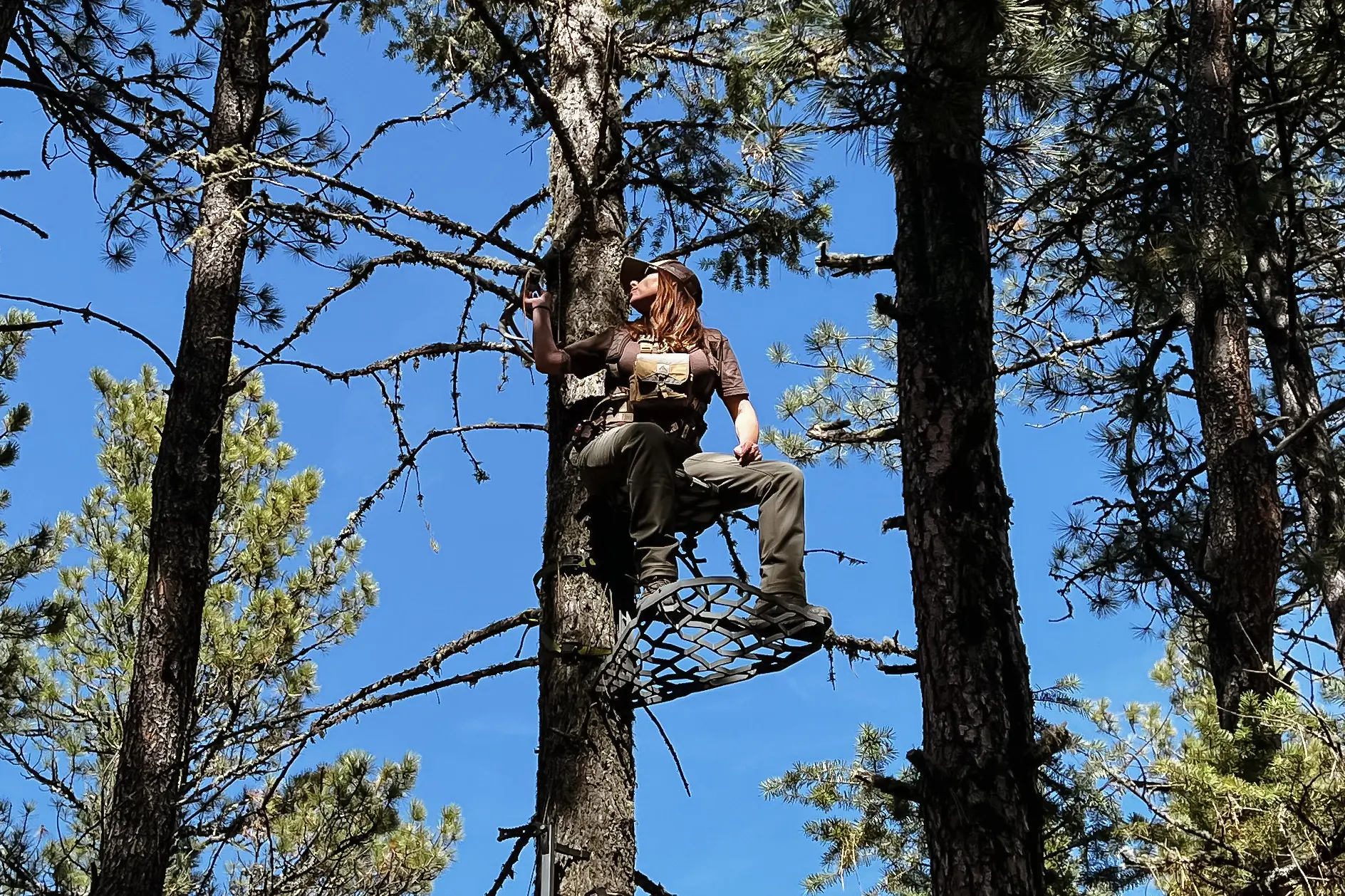Hunting arrows are not a one-size-fits-all piece of gear. Your hunting style, bow setup, and even the species you are hunting need to be taken into consideration when choosing an arrow.
The more time I spend behind the bow, the more I have realized how important hunting arrow selection is. With that said, it’s a rabbit hole and a quite daunting one at that. This can leave one’s head spinning in all sorts of wrong directions. We’re here to set that right.
Down below, you’re going to find our take on what arrows need to be on your radar for the upcoming 2025 fall hunting season.
These are my favorite arrows for a range of applications and budgets. This selection is evolving, so be sure to check for updates, as new arrows will be added as they’re tested.
Editor’s note: We updated this guide on June 6, 2025, to include the Easton 5.0, the best lightweight hunting arrow.
The Best Hunting Arrows of 2025
Victory VAP TKO Elite Arrows
- Material: 100% carbon
- Outside diameter: 0.166”
- Spines: 300, 350, 400
Pros
- Great penetration
- Pulls easy out of targets
- Micro diameter bucks wind well
Cons
- Stock inserts aren’t the greatest
Gold Tip Hunter
- Material: Carbon
- Outside diameter: 0.246”
- Spines: 300, 340, 400, 500
Pros
- Affordable
- Readily available
- Performs with the best of them
Cons
- Not offered in a micro diameter version
Easton 5.0 Arrow
- Material: Carbon
- Outside Diameter: .258" (340 spine)
- Spines: 200, 250, 300, 340, 400, 500
Pros
- Light GPI provides a flatter shooting arrow
- High speed
- Can put in aftermarket inserts to attain high FOC
- Tight tolerances
Cons
- Price
- Lighter arrows may not penetrate as much
Day Six HD
- Material: Carbon
- Outside diameter: 0.253”(300 spine)
- Spines: 250, 275, 300, 350, 400, 500
Pros
- Wide range of available spines
- Incredibly durable
- Made in the USA
Cons
- Can’t buy in a shop (direct to consumer)
Easton x10 Parallel Pro
- Material: Carbon with 7075 alloy core
- Outside diameter: 0.236”(300 spine)
- Spines: 250, 300, 350, 380, 420, 470, 520, 570, 610, 660, 710, 810, 880, 1000, and 1150
Pros
- Extremely tight tolerances = Better accuracy
- More lightweight
- Wide range of spines available
Cons
- Very expensive
Black Eagle Instinct Traditional
- Material: Carbon
- Outside diameter: 0.248” (350 spine)
- Spines: 350, 400, 500, 600
Pros
- Wide range of spines
- Keeps the old-timey look of wooden arrows
- Only arrow of its kind
Cons
- Doesn’t come in the popular 300 spine
Altra Centrum Premier 0.166 Arrows
- Material: High modulus carbon
- Outside diameter: 0.166”
- Spines: 250, 300, 350, 400
Pros
- Wide range of spines
- Excellent component system: ARCOS Insert/Outsert System
- No spine technology; no true stiff side of the arrow means more consistent flight at a lower barrier of entry
Cons
- High GPI and no option for lower. If you want a lighter arrow, this may not be for you.
- Material: Carbon (Acu-Carbon Uniform Spine Process)
- Outside diameter: 0.300”(300 spine)
- Spines: 250, 300, 340, 400, 500
Pros
- Affordable
- Wide range of spines
- No need for spine alignment
Cons
- Not the most durable
- Material: 100% high mod carbon
- Outside diameter: 0.209-0.256”
- Spines: 200, 250, 300, 350, 400, 500, 600, 700, 800, and 900
Pros
- Very wide range of spines available
- Light arrow for flatter trajectory
- Allows for more point weight upfront
Cons
- High mod carbon tends to be more brittle
- Material: 30-ton carbon
- Outside diameter: 0.166”
- Spines: 300, 350, 400
Pros
- Durable
- Tri-spine/Red zone technology for ⅓ less oscillation in arrow flight
- Laser checked for straightness, not averaged
Cons
- Only offered in 3 different spines
- Material: Carbon core wrapped in 7075 aluminum
- Outside diameter: 0.240”(340 spine)
- Spines: 250, 300, 340, 400
Pros
- Unique design
- A long list of proven experience
- Heavy hitter
Cons
- Can bend and render the arrow useless
- Material: 100% carbon
- Outside diameter: 0.296” (340 spine)
- Spines: 300, 340, 400, 500, 600
Pros
- Caters to speed
- Flatter trajectory
- Wide range of spines
Cons
- Lighter weight may decrease durability
- Material: Carbon and stainless steel
- Outside diameter: 0.204”
- Spines: 250, 300, 350, 400
Pros
- Unique design
- Great momentum
- Wide range of spines offered
Cons
- Might be a little heavy for some folks
Hunting Arrow Comparison Chart
| Arrow | Price | Material | Outside Diameter | Spines |
|---|---|---|---|---|
| Victory VAP TKO Elite Arrows | $180 | 100% carbon | 0.166” | 300, 350, 400 |
| Gold Tip Hunter | $54 | Carbon | 0.246” | 300, 340, 400, 500 |
| Easton 5.0 Arrows | $109 per half dozen | Carbon | 0.258″ (340 spine) | 200, 250, 300, 340, 400, 500 |
| Day Six HD | $234 | Carbon | 0.253” (300 spine) | 50, 275, 300, 350, 400, 500 |
| Easton x10 Parallel Pro | $250 | Carbon with 7075 alloy core | 0.236” (300 spine) | 250, 300, 350, 380, 420, 470, 520, 570, 610, 660, 710, 810, 880, 1000, and 1150 |
| Black Eagle Instinct Traditional | $80 | Carbon | 0.248” (350 spine) | 350, 400, 500, 600 |
| Altra Centrum Premier .166 | $109 | High modulus carbon | 0.166” | 250, 300, 350, 400 |
| Easton 6.5 Hunter Classic | $120 | Carbon (Acu-Carbon Uniform Spine Process) | 0.300” (300 spine) | 250, 300, 340, 400, 500 |
| Black Eagle X-Impact | $195 | 100% high-mod carbon | 0.209-0.256” | 200, 250, 300, 350, 400, 500, 600, 700, 800, and 900 |
| Carbon Express Maxima Triad | $300 | 30-ton carbon | 0.166” | 300, 350, 400 |
| Easton FMJ 4mm | $200 | Carbon core wrapped in 7075 aluminum | 0.240” (340 spine) | 250, 300, 340, 400 |
| Gold Tip Velocity Pro | $169 | 100% carbon | 0.296” (340 spine) | 300, 340, 400, 500, 600 |
| Victory RIP SS Elite Arrows | $130 | Carbon and stainless steel | 0.204” | 250, 300, 350, 400 |
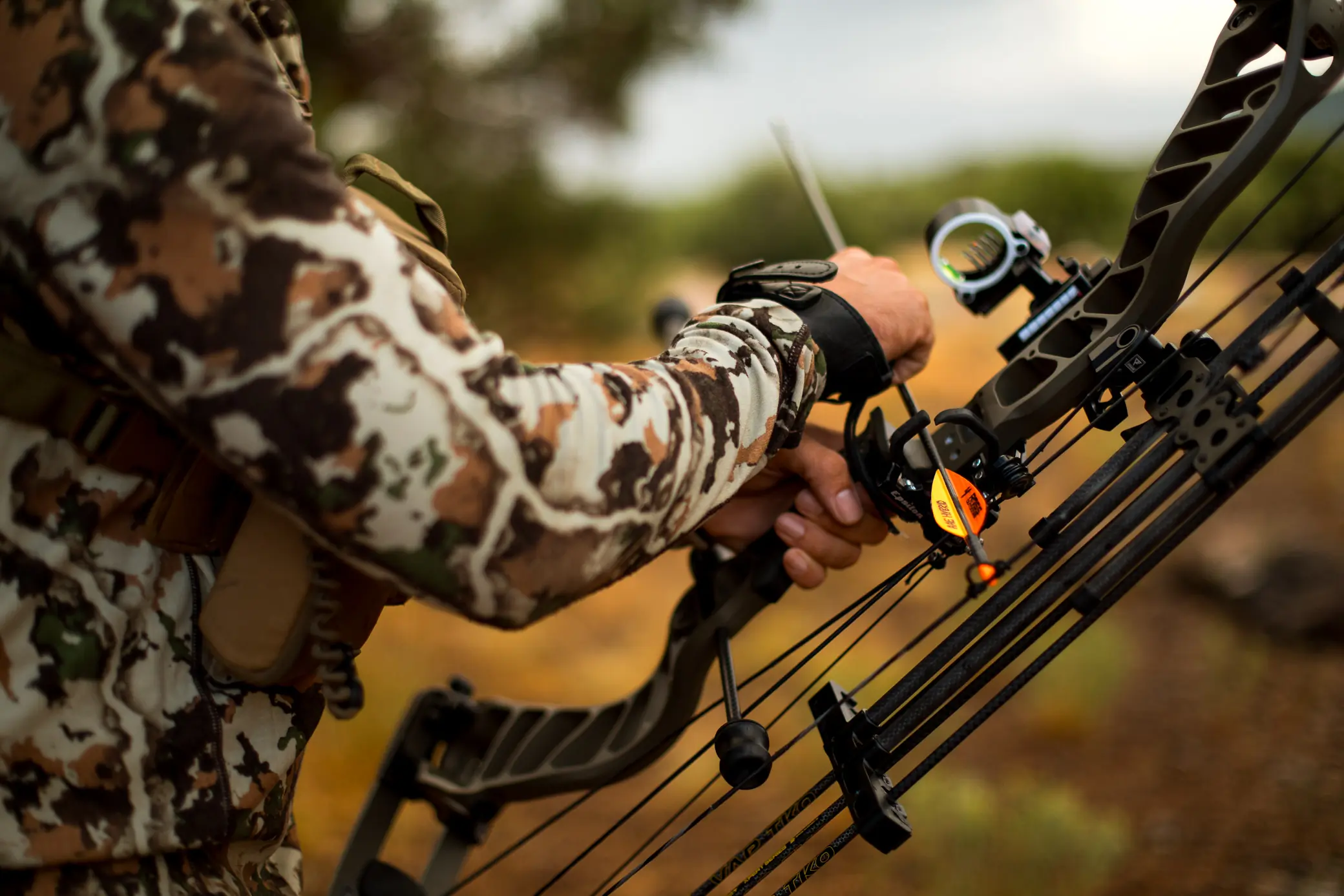
Why You Should Trust Us
There are many moments in bowhunting where you are reminded of how important gear is. Where it means the difference between success and an unfilled tag. I’ve experienced a long list of them and arrows are something that I require a high level of trust from.
Whether it’s hiking above treeline looking for mule deer, slinking down into the bottom of a canyon to call for black bears, or just simply spending time behind the bow at the range. All of it is a constant in my life and has been for the last 10 years. Needless to say, I’ve spent an incalculable amount of time fiddling with arrows finding out what works and what doesn’t.
When coming up with this list I not only took into account my own experience, but also the experience of those around me. I also took into consideration market demand at a variety of price points. Durability, availability, arrow flight, and overall performance are all things I look at as well as the folks in my circle. Arrows are spun to check for inconsistencies, shot into block walls, and shot at greater distances than most would hunt from — and above all else, hunted with.
At the end of the day, as bowhunters, we need ultimate confidence in our arrows. The list above will cater to a wide range of hunters and cover every situation in the mountains, prairies, hardwoods, etc.
For more great insights on bow hunting gear, check out GearJunkie’s guides to the best broadheads and the best archery release aids.




Buying Guide: How to Choose a Hunting Arrow
The hunting arrows listed above are wide in variety. There’s a little something for everyone. One of the major differences between some of these arrows is the arrow weight. Arrow shafts are measured in GPI (grains per inch). And some arrows have a higher GPI than others. This leads me to one of the most highly debated topics in bowhunting.
Should you use a heavy arrow or a light arrow?
We’re gonna suss that out to provide the tools you need for picking the right arrow weight for you and your hunting style.
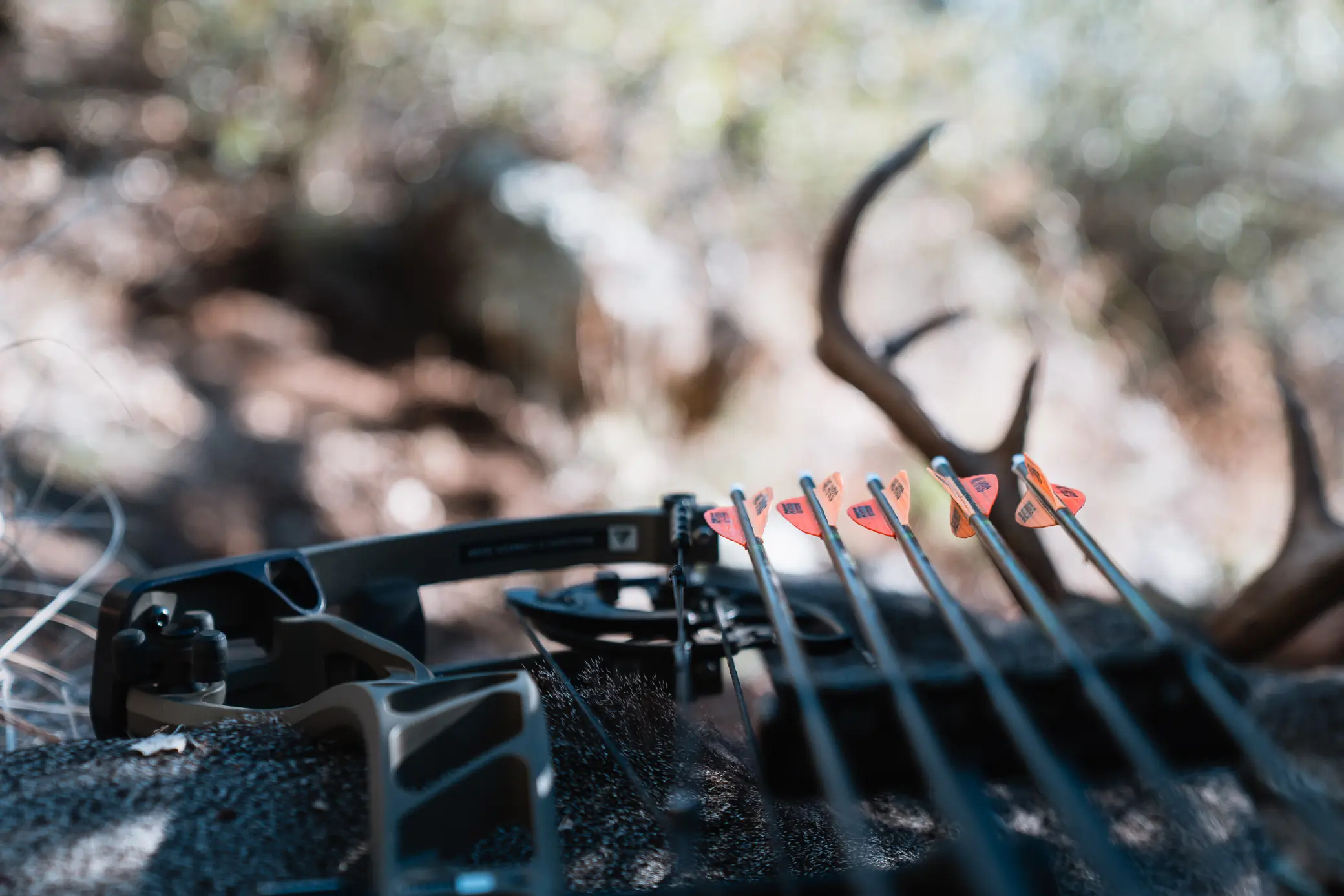



Heavy Hunting Arrows Equal Momentum
In recent years, there’s a push for using heavier arrows for hunting. When I say heavy, I’m referring to arrows that weigh in around 500+ grains. There is a great argument for using a heavier arrow.
Weight equals more momentum, which is basically the force an arrow will retain going through an animal. More momentum means more pass-throughs and fewer chances of arrow flight being altered too much from ribs, etc. This is not to be confused with kinetic energy, which is the amount of energy an arrow has on impact.
Heavier arrows are also more wind-resistant than lighter arrows. And along with that, they absorb more energy on the shot, which translates into a quieter system.
The Downside of Heavy Arrows
While there are no doubt benefits to using a heavier arrow, there are also some drawbacks. The first is that heavier arrows are just slower. This gives arrow flight a much steeper trajectory. So, there is much less room for error when it comes to judging yardage.
This could spell trouble when that elk is a few yards farther than what you thought. For the multi-pin sight users, that also means larger gaps between pins, which makes pin gapping (aiming between pins for odd yardages) much more finicky. The result is less precision accuracy when pin gapping.
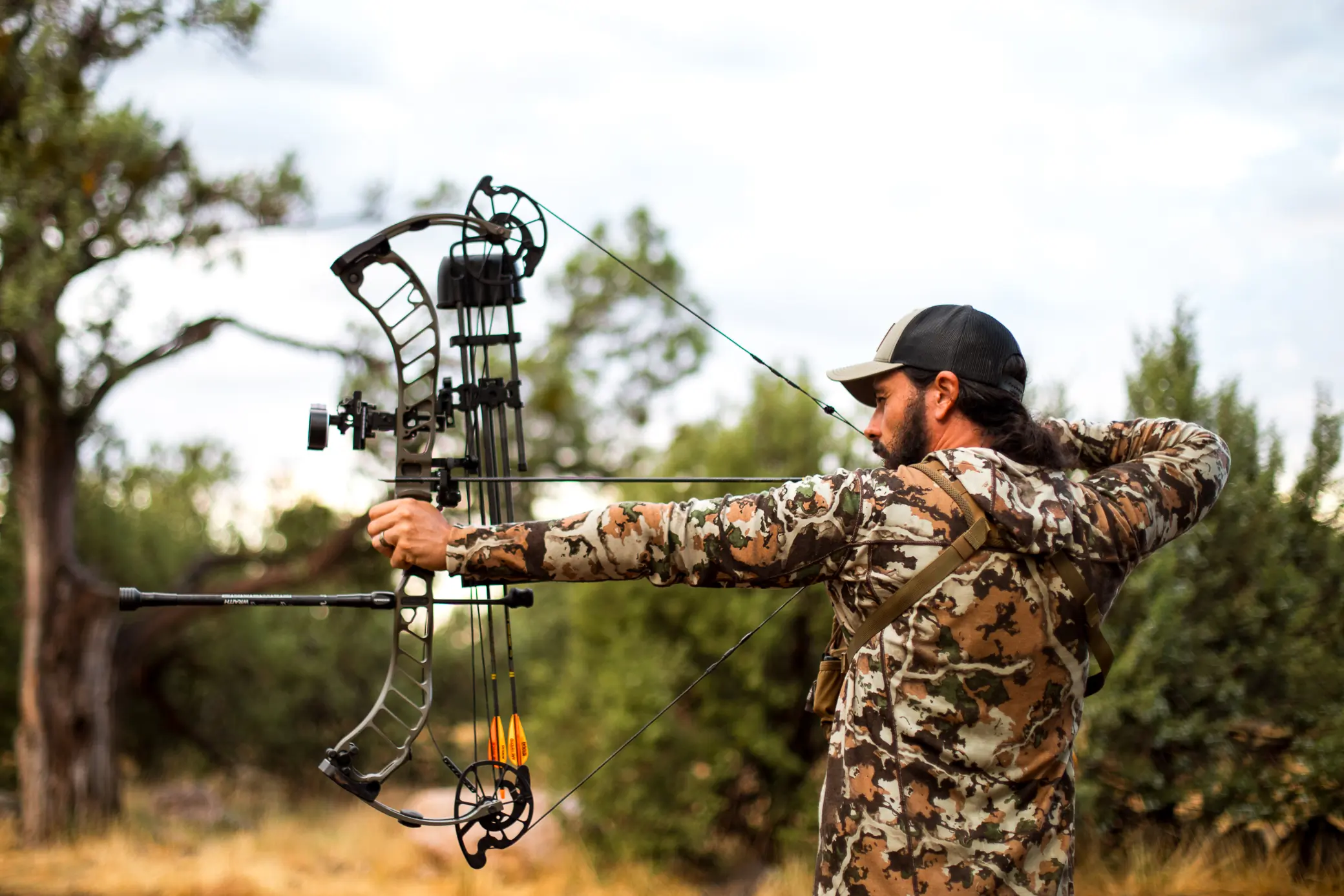



Light Hunting Arrows Equal Speed
On the flip side of things, slimming down arrow weight is becoming shinier by the day. Less arrow weight means more arrow speed, which translates into a flatter trajectory. So, it isn’t as critical to be pinpoint accurate with yardage estimates.
In hunting situations, this can be the difference between notching a tag and following a fruitless blood trail. Along with that, you’ll also be able to stretch the tape on your sight much farther. Even if one doesn’t plan on shooting an animal at a great distance, practicing far shots hones shooting skills and makes shorter shots seem even shorter.
And when those shots land at odd yardages, therein lies another benefit, particularly for multi-pin sight users. Your pin gapping will be much tighter in the sight housing, which means precision will increase when doing something like aiming between the 30 and 40 pins for a 35-yard shot.
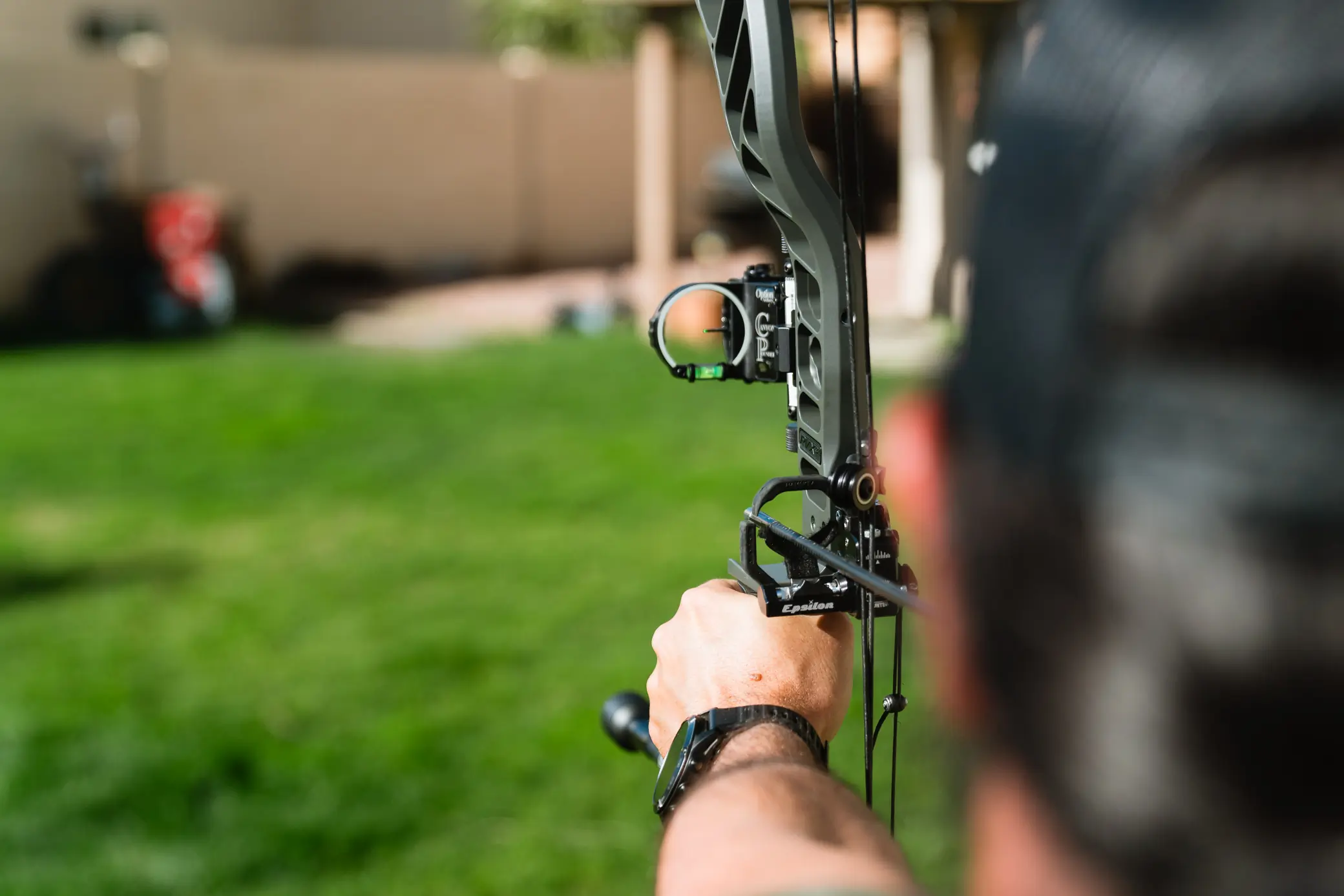



Cons of Lightweight Hunting Arrows
Less arrow weight does come at a cost, though. The first is giving up that momentum that we talked about. Lighter arrows don’t retain as much energy through an animal as heavier ones do. This could result in fewer pass-through shots and a higher likelihood that an arrow is thrown off course by, say, a bone.
And on that note, a lighter arrow also doesn’t buck the wind as well. This is a potentially problematic situation in windy hunting conditions.
Then there is the shot. The moment of truth. When that arrow releases, it won’t be nearly as quiet as a heavier setup.
Lastly, durability seems to drop off the lighter an arrow is. So, if you miss or hit a bone, the chances of your arrow still being intact is slim.
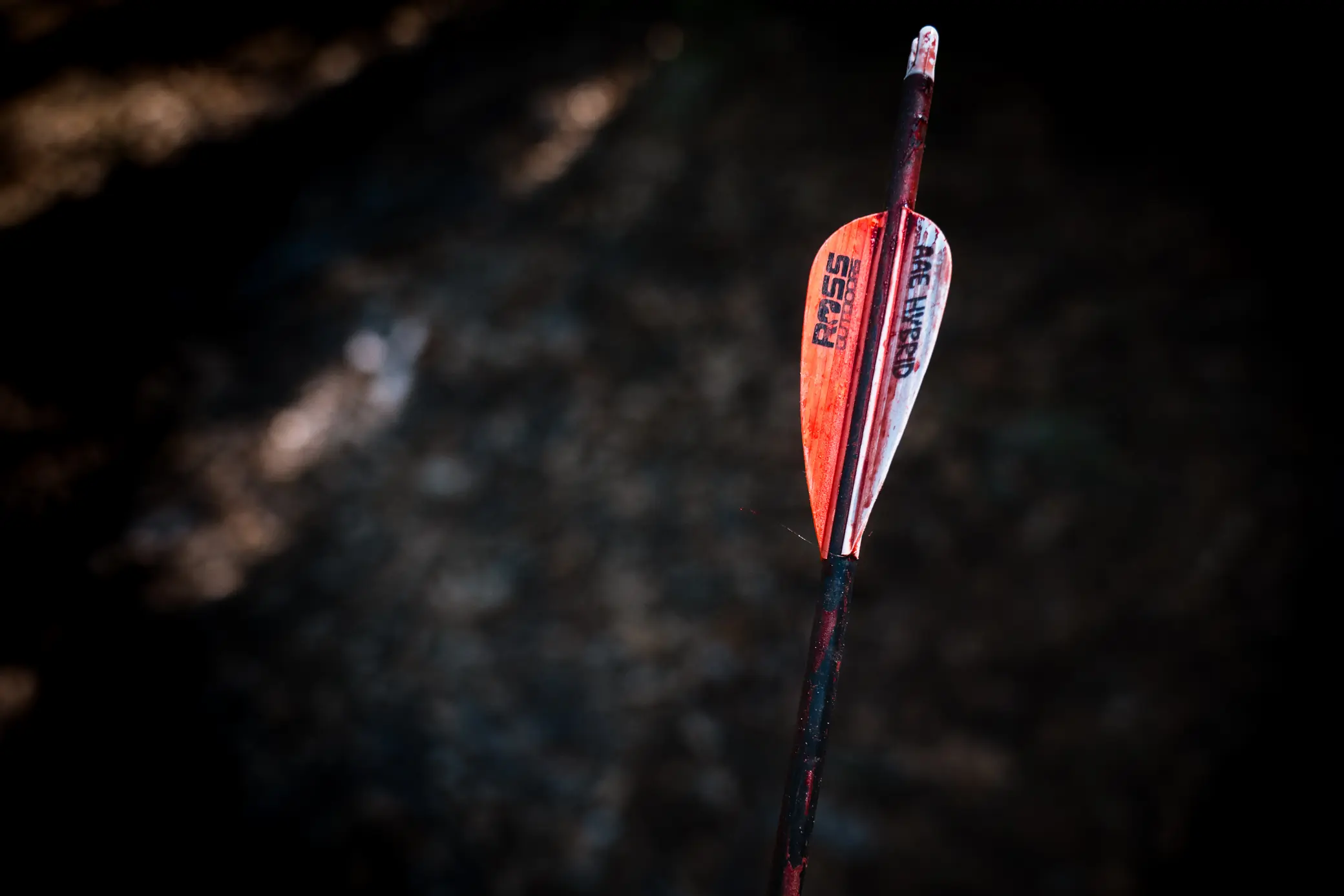



Middle of the Road: A Hunting Arrow That’s Just Right
While you hold the wheel in terms of what arrow weight you’ll end up shooting, our opinion is this. Shoot a quality midweight type of arrow in relation to your setup overall.
I say this because a heavy/light arrow for one person might be a real heavy/light arrow for another based on their draw weight, draw length, etc.
By doing so, you’ll avoid many of the cons that come from the extremes on each end. It’s a best-of-all-worlds solution. There is one more thing, though, that is the most important to keep in mind.
Arrow Flight Is Everything
To cut to the chase, good arrow flight is way more critical than trying to shoot a heavy arrow or a light arrow.
There’s nothing wrong with having somewhat of a goal arrow weight in mind, but in the end, you need to shoot the arrow that is flying the best out of your setup. If your goal is 500 grains, but a 450-grain arrow is shooting lights out for you, it’d probably be wise to eat the 50 grains and go for accuracy and consistency.
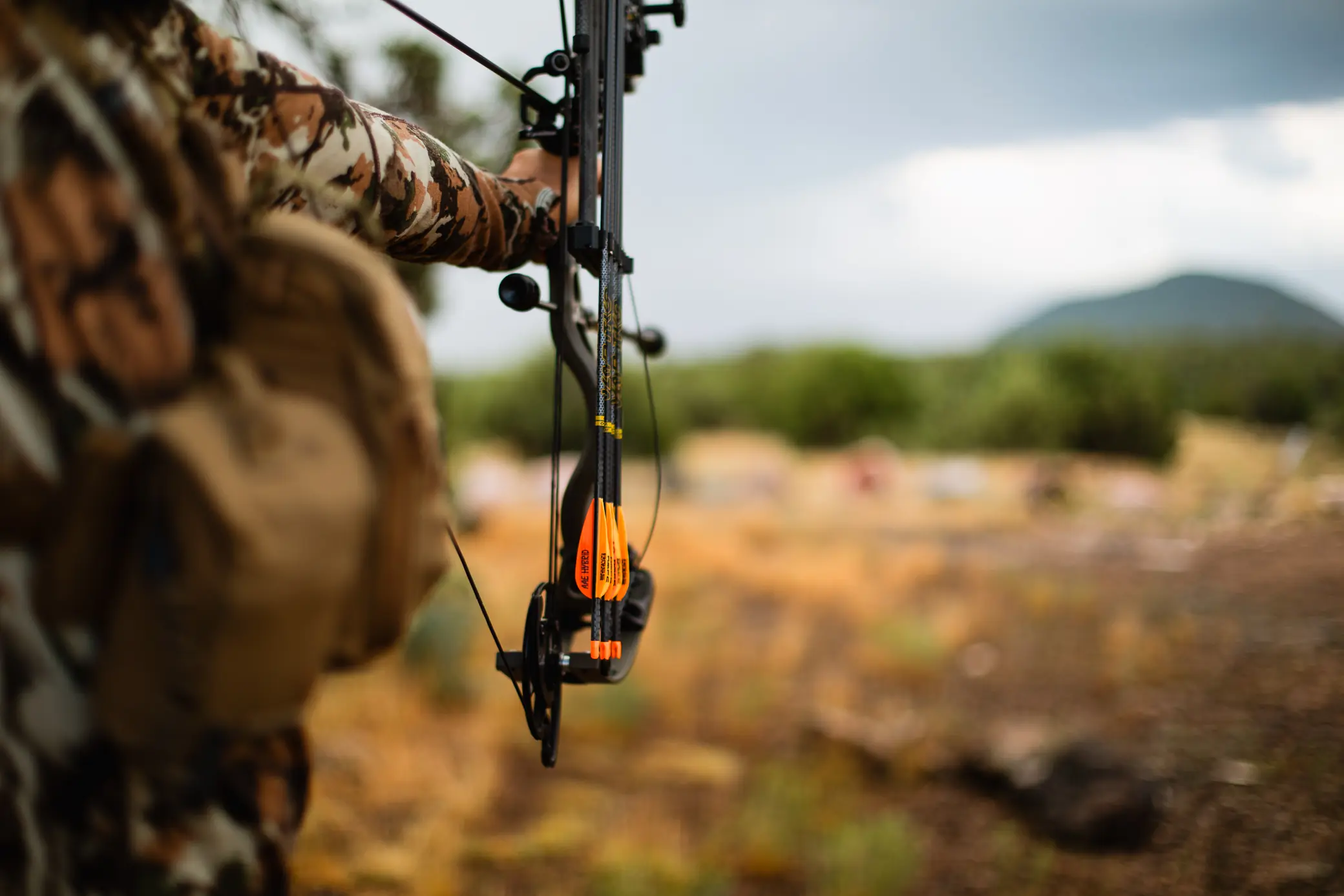



Frequently Asked Questions
The arrow that is best for hunting is the one that you can be the most accurate with. With that said, we stand behind our top pick: the Victory VAP TKO. Check out our guides about broadheads and archery release aids to round out your kit. Both contain some great info to help you choose the right setup for what you’re hunting.
Arrow speeds between 250 fps and 300 fps are ideal for deer-sized game and larger animals.
The minimum arrow weight recommended for a 70# draw is 350 grains. So, any arrow 350 grains and above — with the proper length and spine — will do well with a 70# draw weight bow.
You can refer to our Buyer’s Guide above for a more in-depth look at this, but heavier arrows are going to, by design, retain more momentum after impact than a lighter arrow. On the flip side, heavier arrows will have a steeper arrow trajectory than lighter arrows, thus lacking forgiveness when it comes to yardage estimation.
In general, your arrow should be no shorter than the middle of your riser at full draw. Keep in mind though that with certain broadheads, this may not be possible. Larger profile broadheads might run into the riser on shorter arrows.
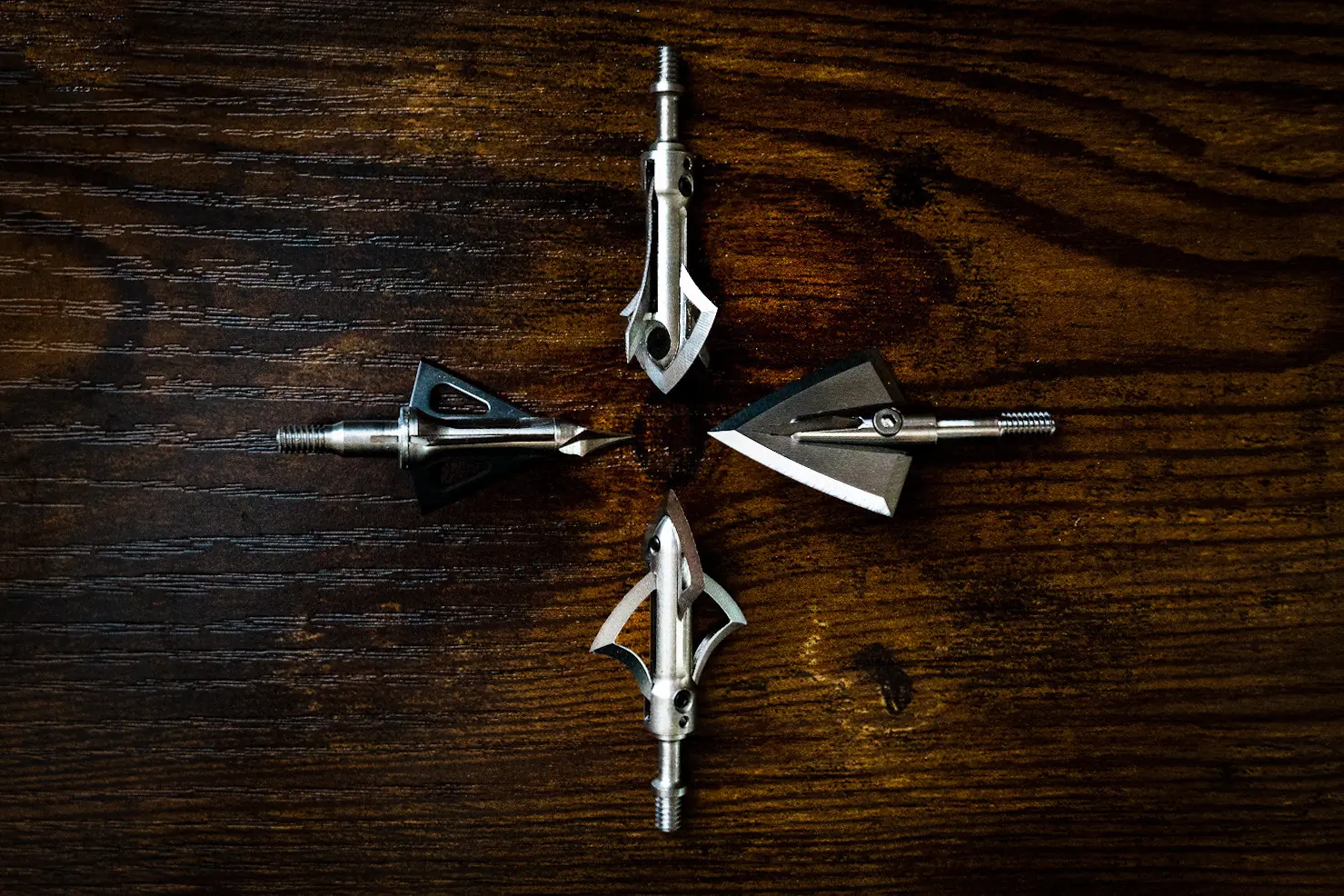

The Best Broadheads for Hunting in 2025
Finding the right broadhead for you can be the difference between filling a tag and not. Here’s our list of game-dropping broadheads for 2025.
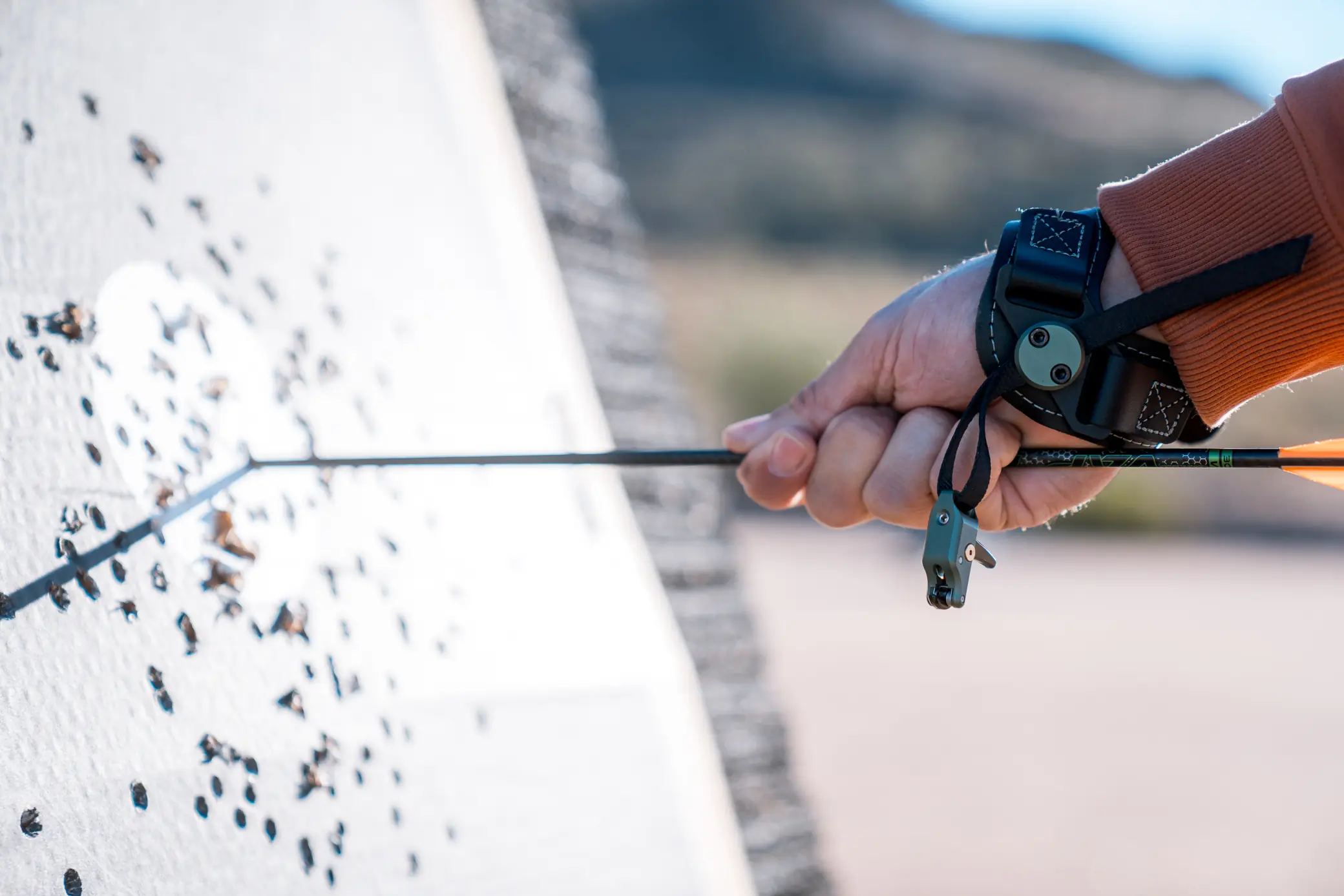

The Best Archery Release Aids for Bowhunting of 2025
Archery release aids are an indispensable tool for all but the most traditional bowhunters. Here we lay out the best releases of 2025.

